Resilience and Recovery
Introduction
This is a non-participant observation of accounts of young people who have suffered sexual abuse, bullying or any other form of traumatic events in the hands of adults or other children. The accounts states in detail how they have been helped by the NSPCC in regaining mental strength to fight back or deal with mental shift as a result of the traumatic events. For those seeking deeper understanding of these experiences, exploring resources on psychology dissertation help could offer valuable insights into the mechanisms of recovery and resilience-building.
PART I; A description of the child and the setting for each of the extracts
Account 1
A young girl named Alice who is currently in her teenage years gives an account on being raped at a young age by a person known to her family. Her first encounter with the social services is at her house where she was sitting on the floor hugging her knees. She states that it took her ten years to share her experience with her family who then called the police and the child services. The police as she mentions, were nice but she was scared no one would ever believe her. Her encounter with a young witness services worker happened after an abuse case was filed by the police needing her testify in court. Her encounter with Ann, her key witness service worker was at her house outside in the sun which she states was good, I presume due to the fact that her house is a familiar and comfortable environment. She also records that Ann was a cheerful person and that was important as she had been nervous as the court day approached. She was also nervous of meeting new people. The court was very formal, Alice says that she wished the barrister would have listened more and interrupted her less while she was giving her account. Being questioned about her experience brought back fresh memories of the abuse which she says made her feel like her recovery was set back to the beginning. It was however good and comforting for her to have Anne and colleen a young volunteer present at the court to distract her. They offered a support she really needed (The NSPCC, 2020).

Account 2
An account of a teenage girl who was taken into foster care at the age eight after her parents are imprisoned. Annie says that she lived with her parents until she was eight years old before they both went to prison for various reasons. The turn of events creates a shift in normalcy for her and her siblings. She then says that she moved in with a relative before placement into a permanent foster care system. Her encounter with the NSPCC was with a worker called Tessa whom she had met years back. Tessa had offered advice and support when her parent’s fist went to prison. Years later, when she felt like some decisions being made by adults about her life were not the right thing for her she contacted Tessa again. She states that she found her situation confusing and that she was not in full control of her life. Tessa talked to her about children’s rights and made her understand that she had a say in what happened to her life. She helped her seek an appeal which was heard and overturned in her favour and as a result she was able to live with the relative she was more comfortable with. The teenage girl states that she can now focus on her studies, being a teenager and have fun; activities that had been interrupted by the move from her relative’s house to a temporary foster home and finally to a permanent foster care programme. She also advices other children who feel like they need support and help to contact the NSPCC since they helped her build her confidence, feel less anxious and stand up for herself (The NSPCC, 2020).
Account 3
At the age of 10, James parents moved houses forcing him to move schools near the neighbourhood as well. He loved school but this new school came with a lot of bullying. He says that his fellow students did not like his glasses, they did not like that he was the new kid at school and he was punched, kicked and called names frequently. The bullying continued from school and to the neighbourhood, to the park and at the mall. He says that he dreaded waking up in the morning to go to school and looked for a new excuse every morning so as not to go. In addition he felt sick, scared and exhausted as the bullying continued into high school. As he had seen posters on child line around the school before, he decided to call them severally but without talking. Eventually he wrote them a letter and to which they responded. One time as he contemplated suicide and with a knife in his hands he decided to call them and this time round talks to Craig, an NSPCC worker. Craig advised him on how to deal with bullies and as he says gave him his confidence back by believing in him. He also convinces him to put the knife down and talk to his parents about the bullying situation at school. He continued calling twice every week stating that Craig, the child line worker helped him realise he had the strength to overcome bullying; he just needed somebody to help him find the strength within (The NSPCC, 2020).
Account 4
Leila is a Muslim teenage girl who moved to England with her mom at the age of 8, she recalls that at age 13 she started running away from home following arguments with her mom. Despite her mom’s good intensions to protect her and keep her safe from drugs and alcohol abuse, Leila felt like she was stuck in between two cultural practises. Her strict Muslim upbringing and social freedom to hang out with her friends whom her mother feared would introduce her to drugs and alcohol. She opts to stay with strangers some of whom are way much older than her and has sexual intercourse with them. As the arguments got worse she wandered the streets at night when she had nowhere to go. One time she attended a group session on sexual exploitation by the NSPCC owing to a referral by a school mentor who was concerned about her safety. These sessions made her acknowledge the fact that she was being taken advantage of sexually by men as she tried acting like an adult when she was just a kid. Having not shared with any of her friends what she was going through, she felt good and comfortable listening to other girls who shared the same experiences as she had without feeling judged or looked down on. She states that she loved the normalcy and at the same time professionalism the NSPCC sessions were handled ((The NSPCC, 2020).
Account 5
At 13, Sioned describes her life as hectic. Her parents argued a lot and later split up leading to her mother suffering depression and spending a lot of time in bed. She and her brother take up an adult’s role doing the house chores and looking after their mother. Sometimes she says they had to encourage her to take a bath. She experiences often outbursts at school trying to balance teenage hood and their family’s dysfunction all at once. While taking an overdose, she one day called the child line that end up calling an ambulance to save her life. She ended up in a psychiatric facility where she ran away several times. She also contemplated suicide several times but called the child line in all encounters. The child line called the police who picked her up in all occasions. She transitioned in foster care but still maintained a communication with the child line talking to Amy a counsellor on the phone that made her feel comfortable. She also wrote them letters and as she says she treasures every letter they wrote back and reads them over and over. Sioned says she owes her life to the journey the child line had been on with her as if they hadn’t she could have taken her life or maybe ended up on the wrong route in life (The NSPCC, 2020).
Account 6
Sophie says being neglected as a child stays with her every day. Both her mom and dad were drug users and as much as they were present physically, they were mentally absent making her feel lonely. She tried to intervene into her parent’s situation and their denial of drug use made her feel like a liar and most significantly rejected. Having tried talking to her tutors at school, she was dismissed due to her overall wellbeing. With fear of no one to believe her she took an overdose in an attempt to take her own life. She was referred to the NSPCC who addressed the situation first by talking to her teachers and giving them an insight into what was happening in her life. Talking to NSPCC also helped her realise that her mom taking drugs wasn’t her fault, a blame she had carried all along. At the NSPCC they did art work which Sophie says influenced her into making safe choices. Sophie says that NSPCC made her make the right life decisions as she is now living in her own apartment while waiting to join the university (The NSPCC, 2020).
The selection of the above accounts was done on the ability of the children to clearly illustrate past suffering and trauma and separate it from their current emotions. All six had gone through a difficult moment at a young age but have really stepped up and participated in making their lives better and separating themselves from their past experiences but not necessarily forgetting how it made them feel. All the children are presumably or relatively of the same age or within the same age group during their traumatic events and give a reflection of their lives at teenage years. While individual trauma responses are subject to an individual’s biological stress regulation system, we explore the physical and motor development, emotional behaviour and gender in relation to trauma response. The website provided for ethnic consideration by changing names and not using personal photographs of the children involved.
Part 2; A Selection of one area of development listed in the Observing Children Pro Forma that is particularly relevant to the child.
1. Physical and motor development
Physical motor and development is mainly observed in Jacques Rousseau, John Dewey, Myrtle McGraw, Arnold Gesell and Jean Piaget’s theories (Carey & Bascandziev, 2015). While all these theories explain different approaches to physical and motor development, jean Piaget’s comprehensive theory ties physical and motor development to cognitive development. The theory centres on knowledge, acquisition of knowledge and its use thereafter (Barrouillet, 2015). In relation to the above childhood trauma accounts, Piaget’s theory explores fear, anxiety and behavioural exhibitions as the physical and motor development outcomes of trauma. Piaget’s theory provides four progressive stages of development which are the sensorimotor, preoperational, concrete operational and the formal operational period (Miller, 2011). The above accounts shows a reflection of traumatic events that occurred during or between the pre-operational stage(age 4-7) and the stage concrete operational (age 7-11), a reflection of the events however are given in the where the young adults are able to reason, think concretely and consider possible outcomes of various actions as well as solve problems (Palestrini, 2009).
The physical and motor development symptoms presented from the above accounts show avoidant behaviour and negative alterations in cognitions which are behavioural exhibitions as a result of trauma they underwent. Avoidant behaviours are numbing responses as a result of traumatic events. In account one the child takes 10 years to talk about rape that occurred when she was still a child and in account two the young lady runs from foster care to avoid facing adults who make decisions that she generally doesn’t agree with (Pesce et al., 2013). In account three, the child avoids attending school by creating excuses so as to avoid being bullied. Higher levels of cerebrospinal fluid in some instances may result in unpredictable early rearing conditions in children and juveniles; this may result in aggression, arousal and anxiety. Arousal is reflected in Leila’s life, account four; when she is involved in sexual encounters with boyfriends and men who were older than her but does not realise she is being abused and sexually exploited. (KHATIB et al., 2020).
The most common emotional behaviours observed amongst victims of trauma and especially in the children range from aggression, self-injury, withdrawal and social anxiety (Milot,. et al., 2010). In the accounts above emotional anxiety is observed amongst trauma victims giving account three where he is tempted to self-harm using a kitchen knife. Other cases of self-harm from overdose are also recorded in accounts two, four and five (Venetsanou & Kambas, 2010). Social withdrawal is observed amongst all the recorded accounts, social withdrawal is evident by the parents or friends inability to tell if something was wrong with the girls and boys. This behaviour is depicted when account three is talked into telling her parents what he is going through at school. It is also evident when Leila, account four admits that even though her friend was concerned about her safety pushing her to intervene she was not aware of the events happening in her life (Enlow et al., 2013).
Part 3; Reflection on the observation task and the relevance of human development for social work
Relevance of human development for social work
Understanding human development provides a framework for social workers to understand various factors that may shape of alter human development at social, biological or cognitive development stages of life (Nelson-Becker et al., 2020). Understanding these factors also enable social workers recognise individual differences in response to traumatic events so they can intervene appropriately depending on each and every individuals need. Understanding the human development creates a foundation for accountability and respectability in the social work practise. Ethically acceptable practises are hence developed and applied when dealing with people’s lives. This ensures dangerous practises are not entertained and both legal and ethical boundaries are respected (Amrollahi & McBride, 2019).
Understanding the human development is relevant for creation of policies or change in policies. With research and machines being developed every day, understanding the human mind and especially juvenile minds is still being explored (Dixit et al., 2019). New discoveries may lead to championing policies that positively impact an individual’s wellbeing, that of a child or the general public protecting them from harm. This is also important in planning and allocation of resources. For example statistics shows that a majority of the United Kingdom’s population is ageing and has increased from 15% to 16% in 2009. Understanding human development in this instance would help the government budget for the older generation and make provisions relevant to their needs (Johannessen, 2020).
The human development allows co-operation between agencies for the better good of an individual. The human development cuts across three main components which are the cognitive, social and biological components affected by the environmental aspects that may be controlled by other agencies. For example an individual contemplating murder suicide or already in the process of committing suicide may be in need of more than just help from the social services alone, he may need help from the police and paramedics (Johannessen, 2020). Understanding the human developments is important in creating educational syllabuses and educational foundations for kid. It enables social workers create limits and timelines. For this reason it creates a clear understanding of why and when children need to study, what they need to study at what level of developments and how to stimulate their minds (Shokane et al., 2020). Human development helps social workers create a caution-based approach when dealing with various individuals. By recognising that people react differently to mental traumas, social workers are able to prevent further damage by handling these individuals cautionary (D'Andrea et al., 2012).

Conclusion
Social workers have contributed immensely to the welfare of the nation and at individual capacities; their contribution to both the young and old could not be appreciated or celebrated enough (Nelson-Becker et al., 2020).
References
Amrollahi, A., & McBride, N. (2019). How to Burst The Bubble In Social Networks. In the 24th
UK Academy for Information Systems International Conference (UKAIS 2019).
Barrouillet, P. (2015). Theories of cognitive development: From Piaget to today.
Carey, S., Zaitchik, D., & Bascandziev, I. (2015). Theories of development: In dialog with Jean Piaget. Developmental Review, 38, 36-54.
D'Andrea, W., Ford, J., Stolbach, B., Spinazzola, J., & van der Kolk, B. A. (2012). Understanding interpersonal trauma in children: Why we need a developmentally appropriate trauma diagnosis. American Journal of Orthopsychiatry, 82(2), 187.
Dixit, A., Mahour, P., & Agarwal, V. (2019). Trauma Focused Cognitive Behavioural Therapy for Post Traumatic Stress Disorder: A Case Study. Indian Journal of Clinical Psychology, 46(1), 77-80.
Enlow, M. B., Egeland, B., Blood, E. A., Wright, R. O., & Wright, R. J. (2012). Interpersonal trauma exposure and cognitive development in children to age 8 years: a longitudinal study. J Epidemiol Community Health, 66(11), 1005-1010.
Gregory, A., Arai, L., MacMillan, H. L., Howarth, E., & Shaw, A. (2020). Children's experiences and needs in situations of domestic violence: A secondary analysis of qualitative data from adult friends and family members of female survivors. Health & social care in the community, 28(2), 602-614.
Johannessen, J. A. (2020). Brain Science and Evidence-based Leadership. In Knowledge Management for Leadership and Communication. Emerald Publishing Limited.
KHATIB, M. N., GAIDHANE, A., AHMED, M., SAXENA, D., & SYED, Z. Q. (2020). Early Childhood Development Programs in Low Middle-Income Countries for Rearing Healthy Children: A Systematic Review. Journal of Clinical & Diagnostic Research, 14(1).
Miller, P. H. (2011). Piaget's theory: Past, present, and future.
Milot, T., Éthier, L. S., St-Laurent, D., & Provost, M. A. (2010). The role of trauma symptoms in the development of behavioral problems in maltreated preschoolers. Child abuse & neglect, 34(4), 225-234.
Nelson-Becker, H., Lloyd, L., Milne, A., Perry, E., Ray, M., Richards, S., ... & Willis, P. (2020). Strengths-based social work with older people. Journal of Clinical Psychology, 50(2), 90-109.
Palestrini, C. (2009). Situational sensitivities. In BSAVA manual of canine and feline behavioural medicine (pp. 169-181). BSAVA Library.
Pesce, C., Crova, C., Marchetti, R., Struzzolino, I., Masci, I., Vannozzi, G., & Forte, R. (2013). Searching for cognitively optimal challenge point in physical activity for children with typical and atypical motor development. Mental Health and Physical Activity, 6(3), 172-180.
Shokane, A. L., Masoga, M. A., & Blitz, L. V. (2020). Creating an Afro-sensed, Community-engaged School: Views from Parents and School Personnel. Journal of Progressive Human Services, 1-19.
Venetsanou, F., & Kambas, A. (2010). Environmental factors affecting preschoolers’ motor development. Early childhood education journal, 37(4), 319-327.
Account 1
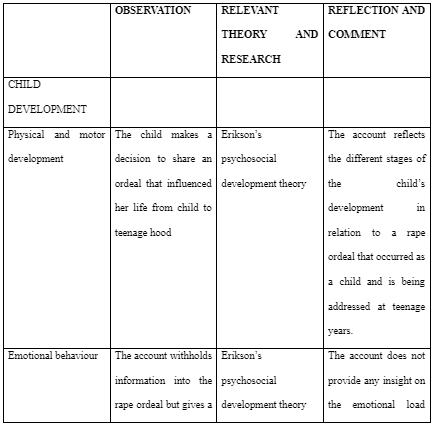
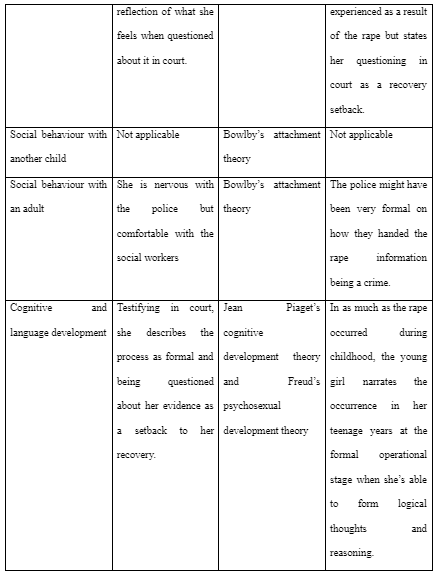
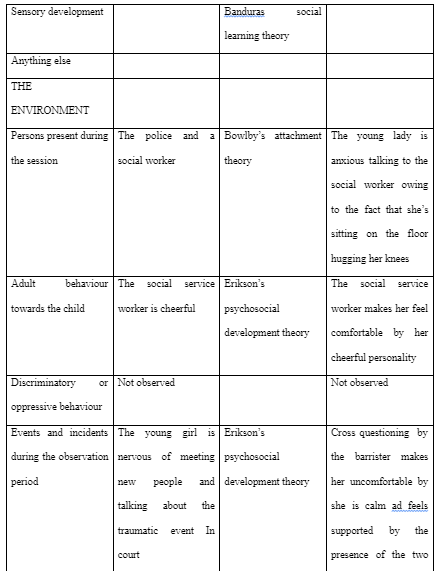
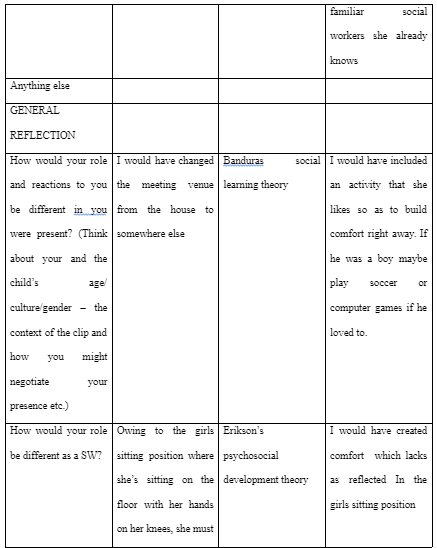
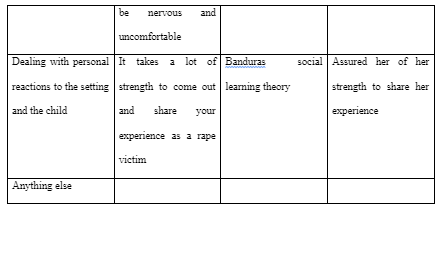
Continue your exploration of Reflective Commentary on Intersectionality and Social Diversity with our related content.
- 24/7 Customer Support
- 100% Customer Satisfaction
- No Privacy Violation
- Quick Services
- Subject Experts



